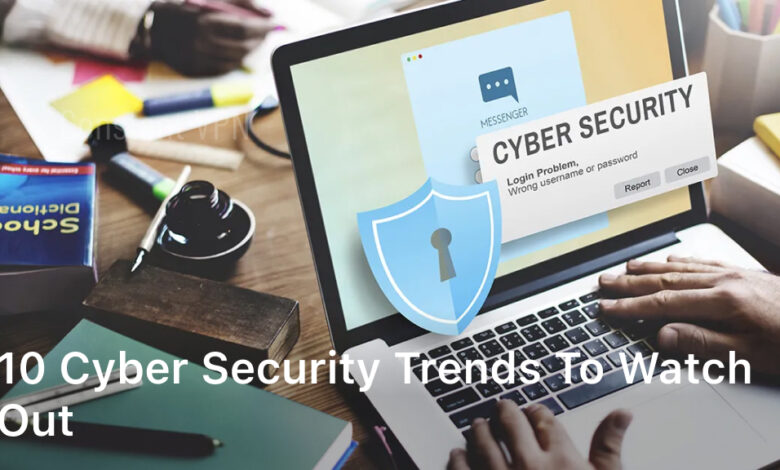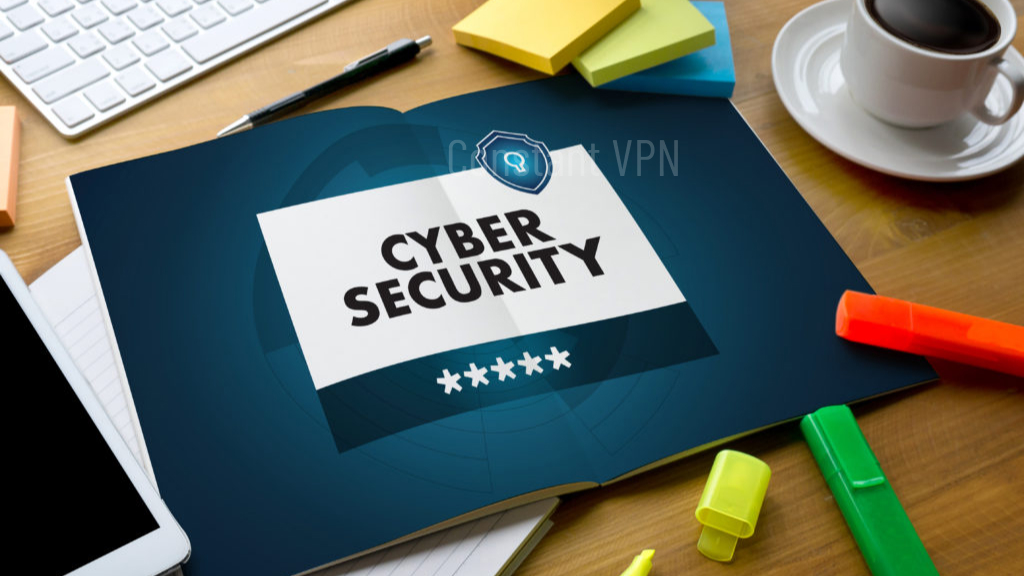
Welcome to our comprehensive guide on the latest cyber security trends that individuals and businesses need to be aware of. In today’s rapidly evolving digital landscape, staying updated on the ever-changing cyber threats and emerging technologies is of utmost importance. This article will provide you with valuable insights into the cybersecurity industry updates, emerging threats analysis, and data breach statistics. By understanding these trends, you can take proactive measures to safeguard your digital space and protect your sensitive information.

Remote Working Cybersecurity Risks
With the increase in remote work due to the pandemic, organizations and individuals have faced new cybersecurity challenges. Remote working environments bring potential risks and vulnerabilities that need to be addressed. In this section, we will discuss the specific cybersecurity risks associated with remote working and provide insights on how to effectively manage these risks.
Cybersecurity Risk Management
Remote working introduces several unique cybersecurity risks that need to be carefully managed. These risks include:
- Unsecured home networks: Remote workers often connect to the internet using their home networks, which may lack robust security measures. This increases the risk of unauthorized access and data breaches.
- Phishing and social engineering attacks: Cybercriminals take advantage of the remote work setup to target employees through phishing emails and other social engineering techniques. These attacks can lead to data breaches and the compromise of sensitive information.
- Insecure remote access tools: The use of remote access tools and virtual private networks (VPNs) introduces potential vulnerabilities that can be exploited by cyber attackers.
In order to effectively manage these risks, organizations and remote workers must prioritize cybersecurity. This involves:
- Implementing robust security measures for home networks, such as using strong passwords and encryption.
- Providing comprehensive training and awareness programs for remote workers to educate them about phishing and social engineering attacks.
- Ensuring remote access tools and VPNs are regularly updated and patched to address any security vulnerabilities.
- Enforcing strict access controls and multi-factor authentication to prevent unauthorized access to corporate systems and data.
Data Breach Statistics
The importance of maintaining robust security measures in remote work setups is underscored by the latest data breach statistics. According to industry reports, the number of data breaches has significantly increased with the rise in remote work.
Statistics highlight:
- An increase in phishing attacks targeted at remote workers, with a 35% rise since the start of remote work.
- 68% of organizations experienced a data breach as a result of a remote worker-related incident.
- 46% of data breaches in remote work environments were a result of compromised credentials.
These statistics emphasize the urgent need for organizations and remote workers to prioritize cybersecurity and take proactive measures to mitigate the risks associated with remote working.
The Internet of Things (IoT) Evolving
The Internet of Things (IoT) is undergoing continuous growth, connecting an ever-expanding range of devices and systems. However, with this increased connectivity comes a set of new cybersecurity challenges. In this section, we will explore the evolving landscape of IoT and delve into the potential security risks associated with interconnected devices.
We will provide insights into the latest updates in the cybersecurity industry pertaining to IoT security. By staying informed about the newest advancements, individuals and businesses can proactively protect their IoT devices and networks. Additionally, we will conduct an analysis of emerging threats in the IoT space, enabling readers to better understand the evolving threat landscape and adapt their security measures accordingly.
The Rise of Ransomware
Ransomware attacks have seen a sharp increase in recent years, making them one of the most prominent cyber threats facing individuals, businesses, and critical infrastructure. In this section, we will delve into the factors behind the rise of ransomware and the evolving tactics utilized by cybercriminals. Additionally, we will explore the latest advancements in cybersecurity technologies that aim to combat ransomware and mitigate its impact.
Ransomware attacks involve encrypting victims’ data and demanding a ransom in return for its release. Cybercriminals now employ sophisticated techniques, such as spear-phishing campaigns, exploit kits, and remote desktop protocol (RDP) attacks, to breach systems and deploy ransomware. The lucrative nature of these attacks, coupled with the anonymity provided by cryptocurrencies, has led to a significant increase in their prevalence.
Factors Contributing to the Rise of Ransomware:
- Easy availability of ransomware-as-a-service (RaaS) platforms, allowing cybercriminals with minimal technical skills to launch attacks.
- Increased connectivity and digital dependency, making organizations and individuals more susceptible to attacks.
- Lax security practices, including poor patch management, weak passwords, and lack of regular backups.
- Financial motivations for cybercriminals, as ransom payments can be obtained anonymously through cryptocurrencies.
Fortunately, cybersecurity technology has also advanced to combat the rising threat of ransomware. Organizations and individuals can benefit from:
Advancements in Cybersecurity Technologies:
- Behavior-based threat detection systems that can identify ransomware patterns and proactively block attacks.
- Secure backup and recovery solutions, ensuring data restoration even in the event of an attack.
- Advanced encryption techniques and secure communication protocols to protect sensitive information.
- Artificial intelligence and machine learning-powered solutions that can detect and respond to ransomware attacks in real-time.
As ransomware attacks continue to evolve, organizations and individuals must stay vigilant and adopt comprehensive cybersecurity strategies. Regularly updating software and security patches, implementing strong access controls, conducting employee training, and backing up critical data are crucial steps in preventing and mitigating the impact of ransomware attacks.
Increase in Cloud Service
In recent years, there has been a significant increase in the adoption of cloud services by organizations. The cloud offers numerous benefits such as scalability, flexibility, and cost-effectiveness, making it an attractive option for businesses of all sizes. However, this increased reliance on cloud infrastructure also brings about potential cybersecurity risks that need to be addressed.
In this section, we will delve into the security implications of the growing use of cloud services and discuss the latest cybersecurity trends related to cloud security. It is essential for organizations to stay updated on these trends to ensure the protection of sensitive data stored in the cloud.
Key Points:
- Securing Cloud Data: As more and more data is stored in the cloud, it is crucial to implement robust security measures to protect it from unauthorized access or breaches. Organizations should consider employing encryption techniques, access controls, and regular backups to safeguard their cloud data.
- Identity and Access Management: With an increasing number of users accessing cloud resources, effective identity and access management becomes paramount. Implementing strong authentication mechanisms like multi-factor authentication (MFA) can help prevent unauthorized access to cloud accounts.
- Cloud Configuration Security: Misconfigurations in cloud infrastructure can expose organizations to serious cybersecurity risks. It is essential to follow best practices provided by cloud service providers and regularly audit and monitor the configuration settings to ensure a secure cloud environment.
- Cloud-Native Security Solutions: To keep up with evolving cyber threats, organizations should leverage the latest cybersecurity technology advancements designed specifically for cloud environments. These solutions provide enhanced visibility, threat detection, and incident response capabilities.
- Employee Training and Awareness: Human error remains a prevalent cause of cloud security breaches. Educating employees about the potential risks and best practices for cloud security is crucial. Regular training sessions and awareness campaigns can help mitigate the human factor in cloud security.
By staying informed about the latest cybersecurity trends in cloud security and implementing best practices, organizations can ensure the secure use of cloud services and protect their valuable data from cyber threats.
Conclusion
In this article, we have explored the top 10 cyber security trends to watch out for. It is crucial to stay informed and proactive in protecting your digital space. By staying up-to-date with the latest cybersecurity industry updates, understanding emerging threats, and leveraging advancements in cybersecurity technology, you can enhance your defense against cyber threats.
Remember to prioritize data privacy and implement multi-factor authentication to safeguard your sensitive information. Be vigilant against social engineering attacks, as cybercriminals continue to devise new tactics to deceive individuals and gain unauthorized access to their data.
Additonally, with the increasing integration of mobile devices into our daily lives, it is important to prioritize mobile cybersecurity. Stay informed about the latest threats targeting mobile devices and implement best practices, such as using strong passwords, keeping your operating system and apps up-to-date, and avoiding suspicious download sources.
By adopting a proactive approach, staying informed, and implementing effective security measures, you can stay ahead of emerging threats and protect your digital assets from cyber attacks.
FAQ
What are the top 10 cyber security trends to watch out for?
The top 10 cyber security trends to watch out for include emerging threats, cybersecurity industry updates, data breach statistics, advancements in cybersecurity technology, and more. Stay informed to protect your digital space.
What are the risks associated with remote working?
Remote working introduces cybersecurity risks such as data breaches, unauthorized access, and insecure Wi-Fi networks. It is important to implement robust security measures and educate employees to mitigate these risks.
How can I effectively manage remote working cybersecurity risks?
To effectively manage remote working cybersecurity risks, you can enforce strong password policies, use multi-factor authentication, provide secure VPN access, and regularly update and patch software and devices.
What are the specific cybersecurity risks associated with the Internet of Things (IoT)?
The Internet of Things (IoT) introduces security risks such as unauthorized access, data breaches, and potential compromise of interconnected devices. It is crucial to implement robust security measures to protect IoT devices and networks.
What are the latest advancements in cybersecurity technologies to combat ransomware?
The latest advancements in cybersecurity technologies to combat ransomware include AI-powered threat detection, behavioral analytics, secure backup solutions, and incident response automation.
How can organizations ensure the security of cloud services?
Organizations can ensure the security of cloud services by implementing strong access controls, encrypting data, regularly monitoring and auditing cloud environments, and working with trusted cloud service providers.




